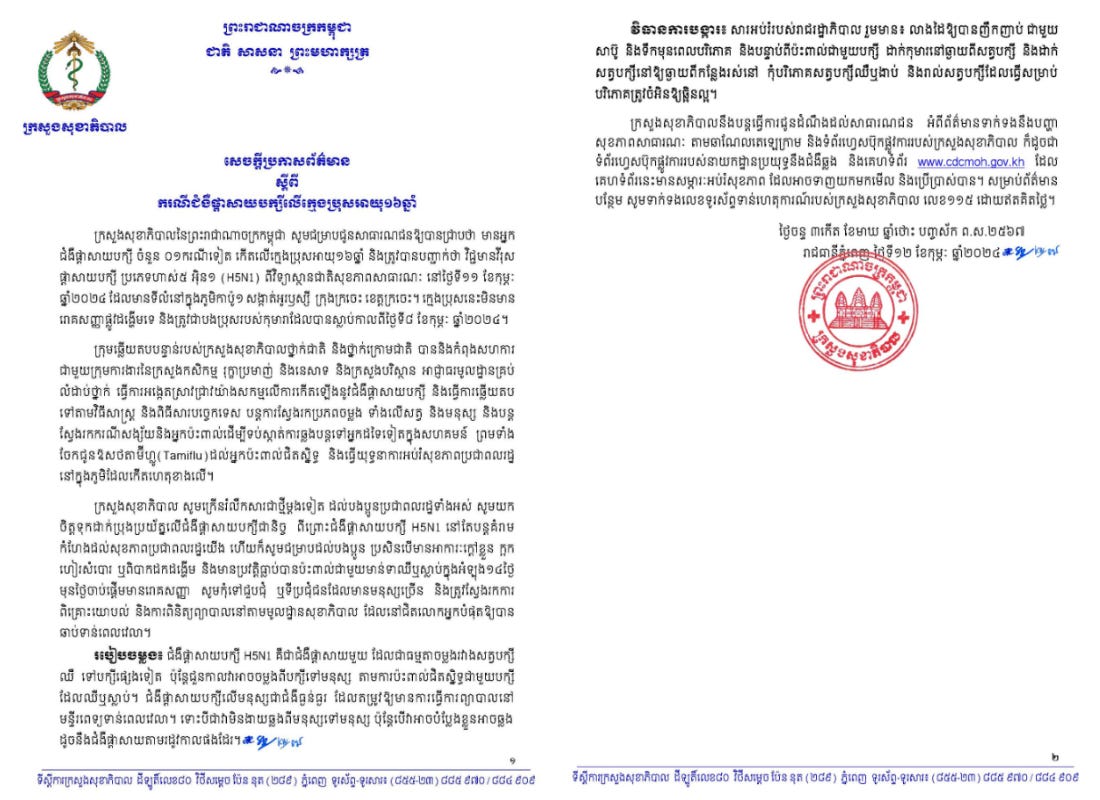4th H5N1 avian influenza case reported in Cambodia
16-year-old brother of 3rd case (fatal case)
In a follow-up on the H5N1 avian influenza situation in Cambodia, the Ministry of Health now reports an additional case in a 16-year-old boy living in Orussey commune, Kratie city, Kratie province.
He is the brother of the 9-year-old boy that died last Thursday from the avian flu.
This is the fourth such case reported in Cambodia in 2024 to date.
Health officials confirm that the boy had no respiratory symptoms.
The emergency response teams of the Ministry of Health at the national and sub-national levels have been cooperating with the working groups of the Ministry of Agriculture, Forestry, and Fisheries and the Ministry of Environment to investigate the outbreak of bird flu, respond to methods and technical protocols to find sources of transmission in both animals and humans, and continue to search for suspected and affected cases to prevent transmission to others in the community, distribute Tamiflu medicine to those affected, and conduct a health education campaign in the affected villages.
The Ministry of Health also advised residents to take precautionary measures to prevent the spread of bird flu, such as washing their hands frequently with soap and water before eating and after contact with birds, keeping children away from animals, and keeping birds away from living. Do not eat the meat of sick or dead birds; all birds made for eating must be cooked well.
According to the World Health Organization (WHO), H5N1 is a type of influenza virus that causes a highly infectious, severe respiratory disease in birds called avian influenza (or “bird flu”). Human cases of H5N1 avian influenza occur occasionally, but it is difficult to transmit the infection from person to person. When people do become infected, the mortality rate is about 60%.
Subscribe to Outbreak News TV on YouTube
Almost all cases of H5N1 infection in people have been associated with close contact with infected live or dead birds, or H5N1-contaminated environments. The virus does not infect humans easily, and spread from person to person appears to be unusual.






